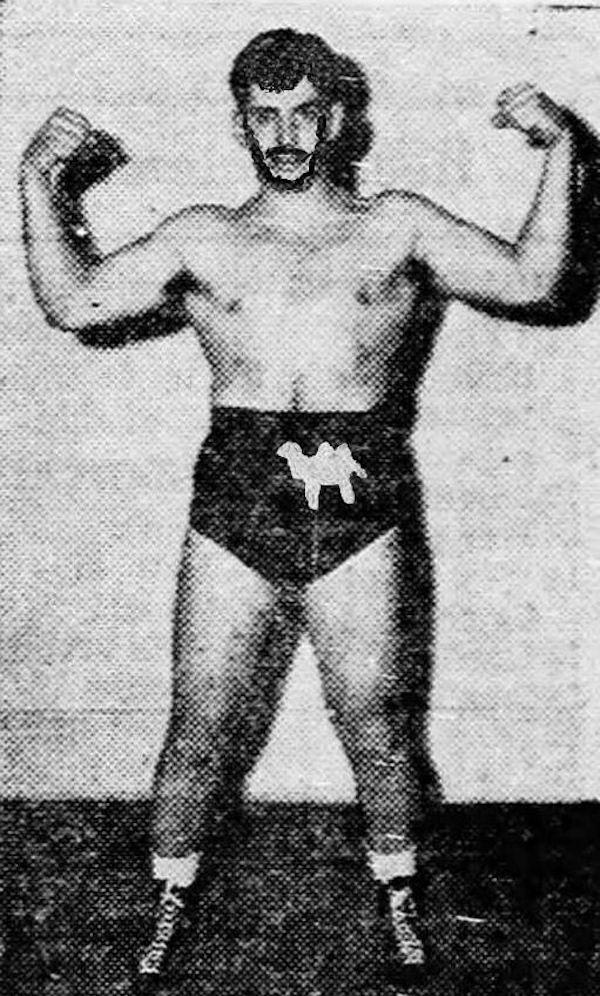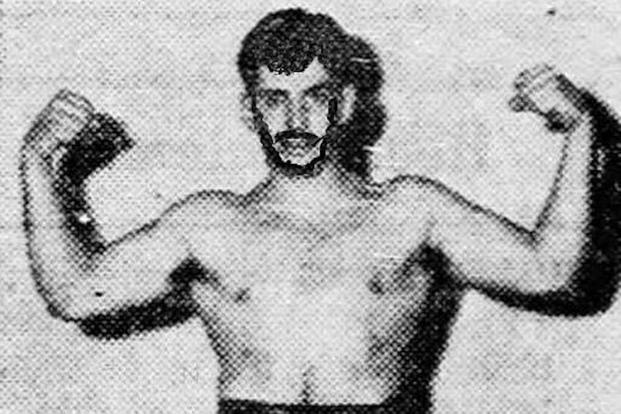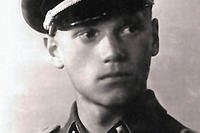Edward Farhat lived the American Dream. The 10th of 11 children born to Lebanese immigrants in East Lansing, Michigan, Farhat grew up to serve in World War II and reinvent himself as "The Sheik," one of the greatest performers in professional wrestling history.
If you want to know the complete, epic tale of Farhat's life and career, Brian R. Solomon's book "Blood and Fire: the Unbelievable Real-Life Story of Wrestling's Original Sheik" has all the details. We're going to focus on The Sheik's Army service and explain just how he elevated pro wrestling to the art form it became after the war.
Four of Farhat's older brothers were already serving when Farhat supposedly borrowed his older brother Edmund's birth certificate to enlist in the Marine Corps while still underage. That attempt failed, but Farhat was drafted into the U.S. Army in August 1944 two months after his 18th birthday.
Like many Michigan natives during the era, his family had worked in metal foundries and auto plants, so it must not have been a surprise when someone in the Army brass thought he was a candidate for tank duty and assigned him to the 93rd Cavalry Reconnaissance Squadron of the 13th Armored Division.
In January 1945, the 93rd Cavalry was sent to France to join Gen. George Patton's 3rd Army. Technician Fifth Grade Farhat completed his training at Camp Bowie in Texas and joined his unit in April 1945, driving a tank through Germany in the waning days of the war.
During his basic training, Farhat was introduced to the sport of amateur wrestling. As the fighting wound down, troops stationed in Europe began playing organized sports to pass the time. The 185-pound soldier proved a gifted wrestler, winning 22 bouts and staying undefeated as he fought his way to the heavyweight championship of the European Theater of Operations.
Scheduled to be deployed to Japan in the fall of 1945, Farhat was at home on leave when the United States dropped atomic bombs on the island and the war ended. PFC Edward Farhat was discharged in January 1946.

Farhat initially got a job assembling Oldsmobiles at a local factory, but was discovered by local professional wrestling promoters while working out at a local gym. Young Farhat developed his skills on the local circuit, but things took off for him once he took on the character of "The Arabian Sheik" in June 1949. By the end of the year, he'd refined the name to become "The Sheik of Araby," and one of the most successful wrestling careers of the 20th century was born.
The Sheik was a caricature relying on racial stereotypes of supposedly a member of a wealthy Syrian family who wore a keffiyeh as he entered the ring, and delayed the starts of his matches and infuriated his opponents by rolling out a rug to complete his prayers to Allah. In real life, Farhat was a Maronite Christian. Outside the ring, Farhat pretended not to speak or understand English, so his wife Joyce (aka "Princess Salima") ordered for him in restaurants.
What separated The Sheik from the pack was his introduction of "hardcore" wrestling techniques to the ring. Farhat used a steel spike or a pencil to poke his opponents, bit their faces and elevated pro wrestling with his mysterious "ball of fire," a trick that saw him seemingly create orbs of flame out of thin air.
Those methods made him one of the most hated heels (villains) in the pro wrestling world. Over his five-decade career, The Sheik had matches against the legends of 20th-century wrestling, including Chief Jay Strongbow, Bruno Sammartino, André the Giant, Abdullah the Butcher and Bobo Brazil.
Late in his career, The Sheik worked with manager Supermouth Dave Drason. Drason, whose real name is Burzynski, provided us with the images for this article. When asked if Farhat ever shared any stories about his WWII service, Burzynski said that the wrestler's time in the Army never came up in all the years he knew Farhat. That would make The Sheik like quite a few members of his generation, men who served in combat and never made a big deal of their experiences.
Farhat retired from the ring in 1998 at the age of 72 and died on Jan. 18, 2003, at the age of 76. The Sheik was inducted into the WWE Hall of Fame by a pair of noted pro wrestlers, his nephew Sabu and Rob Van Dam, who trained with Farhat.
Keep Up With the Best in Military Entertainment
Whether you're looking for news and entertainment, thinking of joining the military or keeping up with military life and benefits, Military.com has you covered. Subscribe to the Military.com newsletter to have military news, updates and resources delivered straight to your inbox.

















